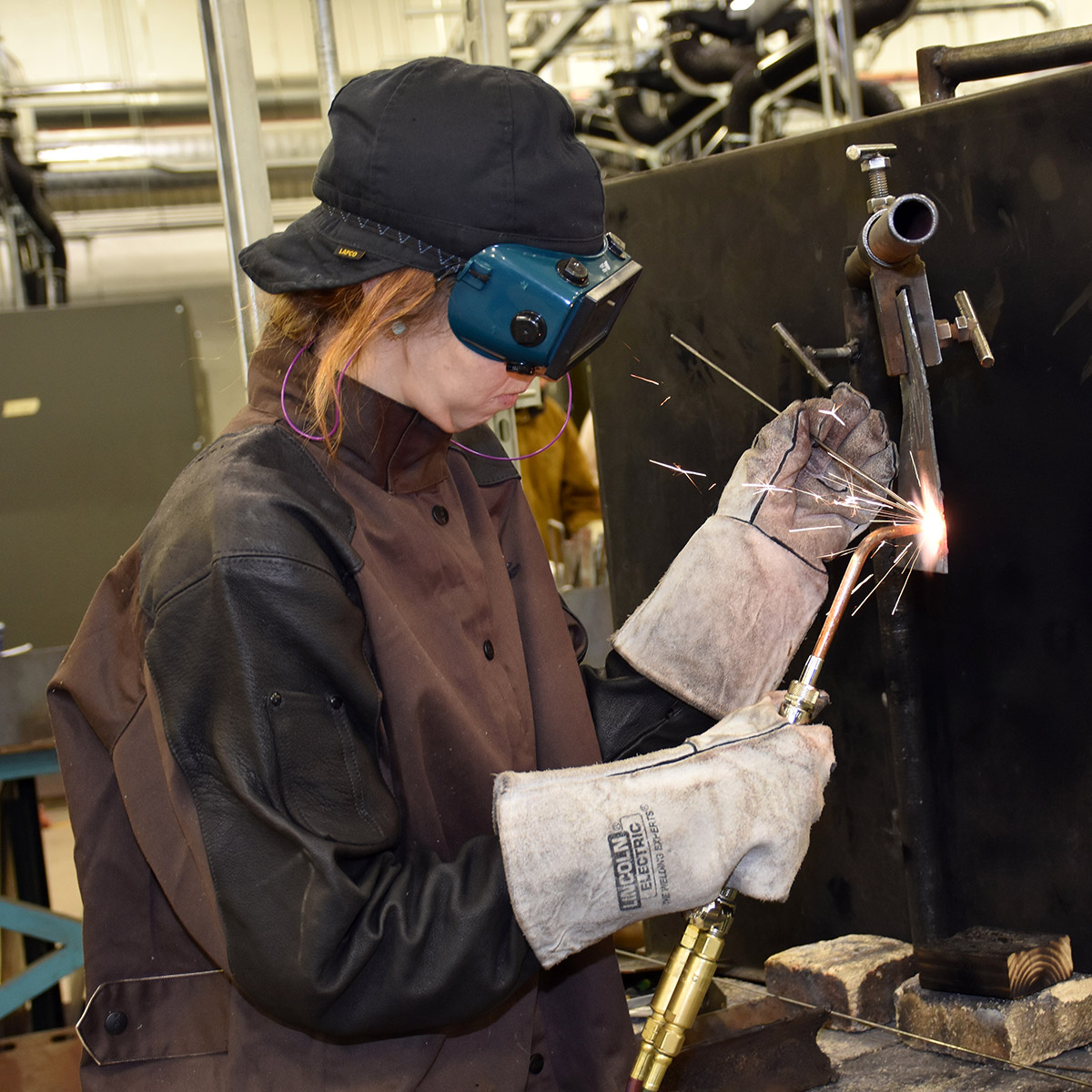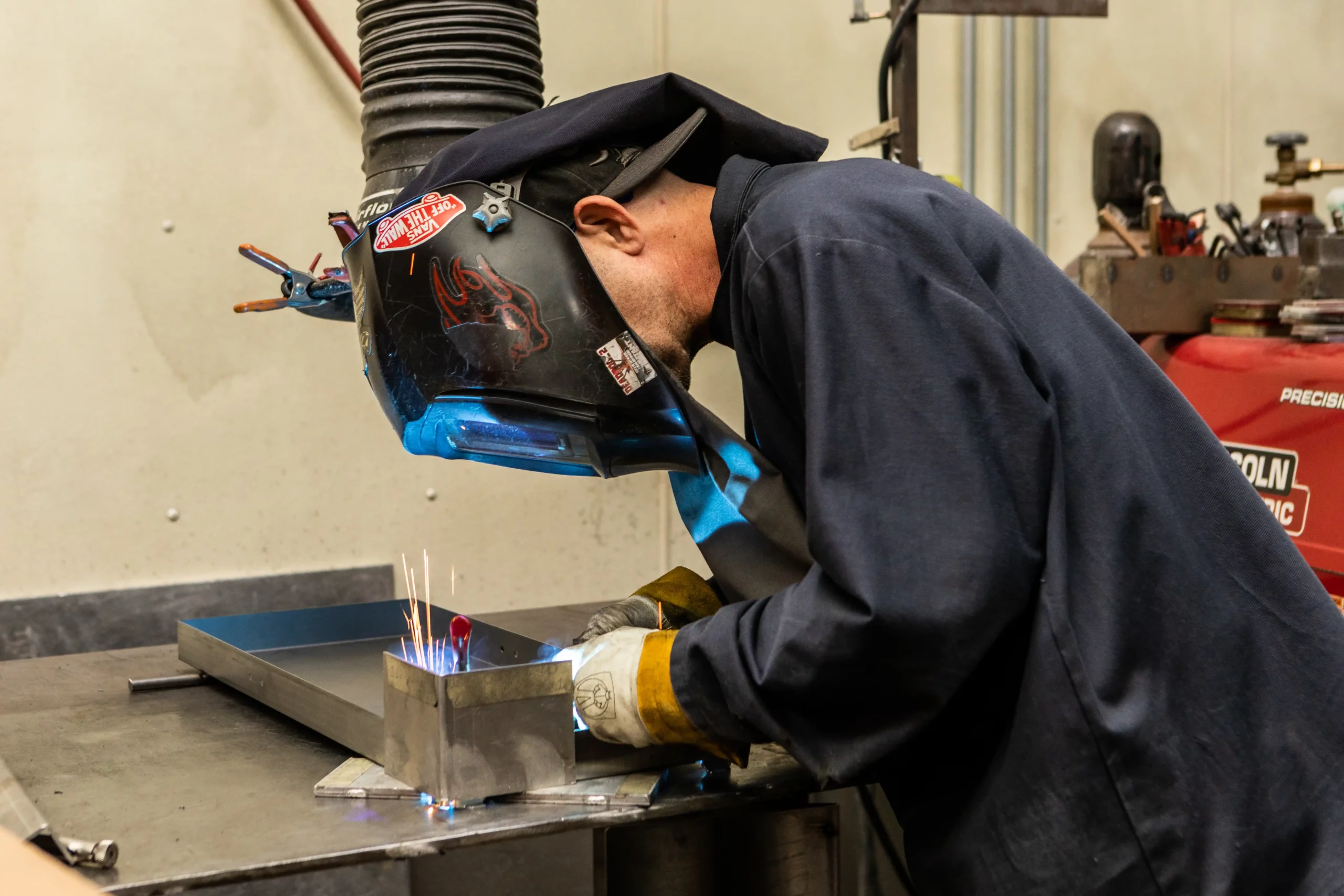Top welding defects Montana Mobile Welding and Repair Belgrade Welding helps eliminate
Wiki Article
Usual Welding Repair Issues and How to Address Them Efficiently
Welding repair services frequently run into a series of problems that can jeopardize the honesty of the final item. Typical problems consist of insufficient penetration, porosity, and misalignment, among others. Each issue offers special challenges that require specific strategies for resolution. Comprehending these issues is crucial for welders aiming to boost their abilities and outcomes. This conversation will certainly discover these common welding repair concerns and efficient methods to address them.Insufficient Infiltration
Poor penetration occurs when the weld metal falls short to fully fuse with the base material, leading to weak joints and possible architectural failures. This concern usually comes from inadequate warmth input, inaccurate electrode angle, or incorrect welding speed. Welders may encounter insufficient penetration because of a miscalculation of the essential parameters for a particular material thickness or type. In addition, contamination on the base material's surface can hinder reliable bonding, exacerbating the issue. To deal with inadequate penetration, welders must ensure suitable settings on their tools and maintain a tidy work surface area. Normal assessment of welds is suggested to identify any type of deficiencies early, allowing for prompt adjustments and the avoidance of endangered architectural honesty in bonded assemblies.Porosity
Porosity is an usual issue in bonded joints that materializes as tiny gas bubbles entraped within the weld steel. This issue can compromise the integrity of the weld, resulting in decreased toughness and potential failing under anxiety. Belgrade Welding. Porosity commonly develops from contamination, moisture, or improper welding techniques, which enable gases to run away right into the liquified weld swimming pool. To deal with porosity, welders ought to assure correct surface prep work, maintain a tidy workplace, and use suitable welding criteria. In addition, picking the right filler material and protecting gas can minimize gas entrapment. Routine evaluation and testing of welds can aid recognize porosity early, assuring prompt corrective actions are taken, thereby protecting the quality and reliability of the welded frameworkMisalignment
Imbalance in welding can emerge from different factors, consisting of improper arrangement and thermal growth. Comprehending the origin is essential for effective resolution. Several modification techniques are available to realign parts and assure structural honesty.Root causes of Misalignment
Welding misalignment usually comes from a range of underlying concerns that can compromise architectural integrity. One main reason is incorrect fit-up of components before welding, which can result in voids and irregular surface areas. Variations in thermal growth during the welding procedure can likewise lead to distortion, particularly if the materials being signed up with have different coefficients of expansion. In addition, insufficient fixturing and clamping may stop working to hold components safely in place, resulting in activity throughout welding. Poorly kept equipment, consisting of welding makers and devices, might introduce disparities in the weld grain, more adding to misalignment. Lastly, operator error, stemming from not enough training or experience, can also play a significant duty in producing misaligned welds.Adjustment Strategies Offered
Addressing misalignment effectively calls for a combination of rehabilitative techniques tailored to the particular problems available. One common approach is the use of jigs or fixtures to hold elements in the appropriate placement throughout welding, making certain regular alignment. Furthermore, pre-heating the products can assist lower distortion and boost fit-up. For substantial imbalance, mechanical realignment methods, such as using hydraulic jacks or clamps, can be used to remedy the setting prior to welding. Post-weld warm treatment might additionally be necessary to alleviate stresses triggered by misalignment. Finally, careful inspection and modification during the arrangement stage can avoid imbalance issues from ending up being significant issues, promoting a smoother welding process and improving overall structural integrity.Distortion
Distortion is a common challenge in welding that can develop from numerous variables, including uneven home heating and air conditioning. Comprehending the root causes of distortion is essential for carrying out effective avoidance methods. Addressing this concern not only boosts structural honesty but additionally boosts the overall quality of the weld.Sources of Distortion
When subjected to the intense warm of welding, products frequently undertake changes that can lead to distortion. This phenomenon mainly develops from thermal development and contraction during the welding procedure. As the weld location warms up, the material increases; upon air conditioning, it gets, which can create interior stresses. On top of that, irregular heating throughout a workpiece can aggravate these stress and anxieties, causing warping or bending. The sort of material also plays a considerable function; steels with varying thermal conductivity and coefficients of development might react in different ways, resulting in uncertain distortions. Bad joint design and insufficient fixturing can contribute to imbalance throughout welding, boosting the probability of distortion. Comprehending these reasons is necessary for efficient welding repair work and prevention methods.Avoidance Techniques
Effective prevention techniques for distortion throughout welding emphasis on regulating warmth input and making certain appropriate joint layout. Maintaining a constant warmth input helps to minimize thermal development and contraction, which can cause distortion. Making use of strategies such as preheating the work surface can likewise lower the temperature level slope, advertising uniform home heating. Furthermore, picking suitable joint layouts, such as T-joints or lap joints, can enhance stability and reduce tension concentrations. Implementing appropriate fixturing to safeguard the workpieces in location better help in keeping positioning throughout the welding procedure. Finally, staggered description welding series can distribute warmth a lot more uniformly, stopping localized distortion. By applying these methods, welders can greatly decrease the probability of distortion and boost the total top quality of their welds.Breaking
Fracturing is an usual concern run into in welding repairs, commonly arising from numerous aspects such as improper air conditioning prices, product selection, or inadequate joint prep work. The event of fractures can significantly jeopardize the integrity of the weld, bring about possible failures during operation. To resolve this problem, welders should initially examine the root creates, ensuring that materials work and appropriately chosen for the specific application. Additionally, regulating the air conditioning rate throughout the welding process is important; rapid air conditioning can generate stress and result in breaking. Appropriate joint style and prep work also add to lessening the risk. Implementing these strategies can enhance weld quality and resilience, ultimately reducing the likelihood of breaking in completed weldments.
Insufficient Blend
A substantial problem in welding repairs is insufficient fusion, which occurs when the weld metal does not effectively bond with the base material or previous weld passes - Montana Mobile Welding and Repair Belgrade Fabrication. This problem can bring about weaknesses in the joint, potentially jeopardizing the honesty of the bonded framework. Elements adding to incomplete fusion consist of insufficient heat input, improper welding strategy, and contamination of the surface areas being signed up with. To suitcase welder address this problem properly, welders must ensure proper pre-weld cleansing and surface area preparation, along with readjust their welding parameters to accomplish sufficient penetration and blend. Routine inspection during the welding process can also help determine insufficient combination early, allowing for timely restorative procedures to improve the total top quality of the weldOverheating
While welding repairs can improve architectural integrity, overheating provides a significant obstacle that can cause material degradation. Extreme warm during welding can change the mechanical residential properties of metals, causing minimized toughness, increased brittleness, and warping. This phenomenon is especially crucial in high-stress applications where architectural integrity is vital. Determining overheating can involve aesthetic inspections for staining or distortion, along with monitoring temperature level throughout the welding procedure. To mitigate the threats related to getting too hot, welders need to employ ideal methods, such as managing warm input, changing travel speed, and utilizing suitable filler materials. Furthermore, carrying out pre- and post-weld try this site warmth therapies can help recover product residential properties and enhance the total high quality of the repair, ensuring long-term performance and safety and security.Frequently Asked Questions
What Are the Typical Indicators of a Welding Problem?

Exactly How Can I Examine My Welds for High quality?
To evaluate welds for high quality, one can make use of aesthetic examinations, ultrasonic screening, and radiographic approaches. Each strategy guarantees structural integrity, determines flaws, and confirms adherence to specified requirements, inevitably enhancing the integrity of the welded joints.What Safety and security Precautions Should I Take While Welding?
When welding, one need to focus on security by wearing ideal individual safety tools, making certain proper ventilation, securing combustible products away, keeping a tidy work area, and understanding environments to avoid accidents and injuries.Can I Fix a Weld Without Redesigning the Entire Joint?
Repairing a weld without renovating the entire joint is possible, relying on the damages (Belgrade). Techniques such as grinding, adding filler product, or utilizing a welding procedure can properly address details defects while maintaining the bordering frameworkWhat Tools Are Necessary for Effective Welding Repairs?
Important tools for efficient welding repairs consist of a welding device, cable brush, grinder, protective equipment, clamps, and filler products. Each tool plays an essential duty in making sure high quality and security during the repair service process. Porosity usually emerges from contamination, wetness, or incorrect welding strategies, which enable gases to get away into the liquified weld pool. Poorly conserved tools, consisting of welding equipments and tools, might introduce disparities in the weld bead, additional adding to misalignment. When subjected to the intense warmth of welding, products frequently undergo modifications that can lead to distortion. Breaking is an usual concern encountered in welding repair work, usually resulting from different factors such as inappropriate air conditioning prices, product choice, or inadequate joint prep work. A substantial problem in welding fixings is insufficient blend, which occurs when the weld metal does not adequately bond with the base material or previous weld passes.Report this wiki page